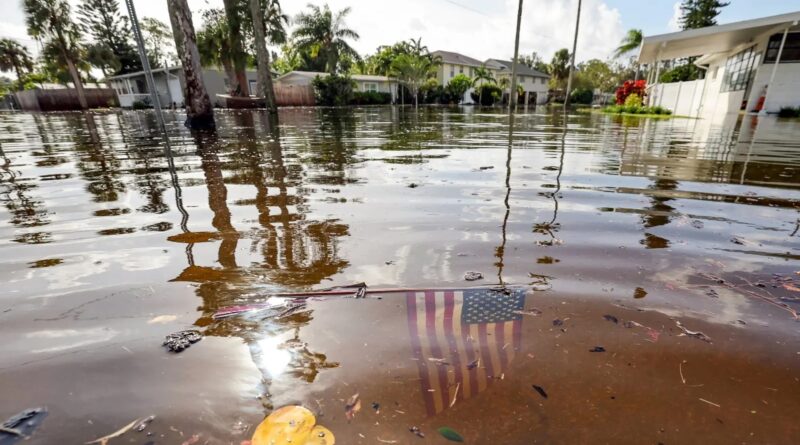Florida’s water crisis: Rising seas threaten the Sunshine State’s most precious resource
Even if you’ve never visited Florida, you know it boasts on both the east and west side over 1500 miles of gorgeous coast line and is home to some of the most famous beaches. Unfortunately, the thing that draws people to visit the Sunshine State—fueling our economy in the process—also poses a unique threat.
As ground zero for climate change impacts, Florida is vulnerable to hurricanes, flooding, and sea level rise. While these threats directly affect Floridians, a bigger issue lurks beneath the surface: the state’s water supply. The growing risks of sea level rise and flooding could have disastrous effects on both the drinking water and water infrastructure.
Since 1950, Florida has experienced eight inches of sea level rise, and by 2050, an additional 10 to 12 inches of additional sea level rise is expected along the coastline. While sea level rise is not unique to Florida, due to its low-lying topography, rising seas increase the likelihood of flooding. In turn, this flooding threatens the state’s water supply, which is impacted in two key ways: salt water intrusion into groundwater supplies and the overloading of waste water systems.
Groundwater accounts for 64% of Florida’s freshwater supply, making it crucial to protect it from contamination due to saltwater intrusion. This occurs when rising sea levels push saltwater into freshwater aquifers— Florida’s already strained primary source of drinking water. Once saltwater infiltrates these underground reservoirs, it can render the water undrinkable, forcing cities and municipalities to invest in costly water treatment technologies or seek alternative water sources.
Compounding the problem, Florida’s aging water infrastructure is ill-equipped to handle the increasing pressures caused by both population growth, tourism, and more intense flooding. Many of the state’s wastewater treatment systems are located near coastlines and are vulnerable to storm surges, sea-level rise, and heavy rainfall. In the recent aftermath of Hurricane Helene, the city of St. Petersburg turned off the power at one of its sewer treatment plants to protect it from storm surge and after Hurricane Ian, wastewater plants overflowed along the western coast of Florida. Meanwhile, residents in Orlando were asked to limit how often they flush toilets, take showers, wash dishes and do laundry because of overflowing sewers. When these systems overflow, untreated sewage can mix with floodwaters, leading to contamination of drinking water sources and posing significant public health risks.
To address these challenges, Florida must invest in climate-resilient infrastructure, including upgrading water treatment facilities, building more flood defenses, and protecting wetlands that act as natural buffers against flooding. While these actions will cost money, the cost of inaction will be far greater.
There is a pressing need for bold, proactive action when it comes to protecting Florida’s water supply. The state has already seen the consequences of neglecting these vulnerabilities, and without significant investment in mitigation efforts, those problems will only worsen.
While the solutions are costly, they are not beyond reach—and should have bipartisan support. Upgrading water treatment plants to withstand flooding, retrofitting wastewater systems, and improving stormwater management can help safeguard communities. To understand the extent of possible damage to water treatment plants, look no further than Asheville, NC. Following Hurricane Helene, the city of Asheville’s water treatment system suffered severe damage. Additionally, preserving and restoring Florida’s wetlands will be critical to enhancing the state’s natural defenses. Wetlands act as sponges during storms, absorbing excess water and reducing flood impacts.
Florida’s future resilience hinges on the decisions made today. It’s a paradise worth protecting, but that protection requires acknowledgement that climate change is reshaping Florida’s landscape and the lives of Floridians. Bold investments now will pay off in the long run, as will climate adaptation and resilience efforts. Without proactive measures, Florida’s most valuable resource—its water —could become its most pressing crisis.
Originally written for and published on The Invading Sea.

